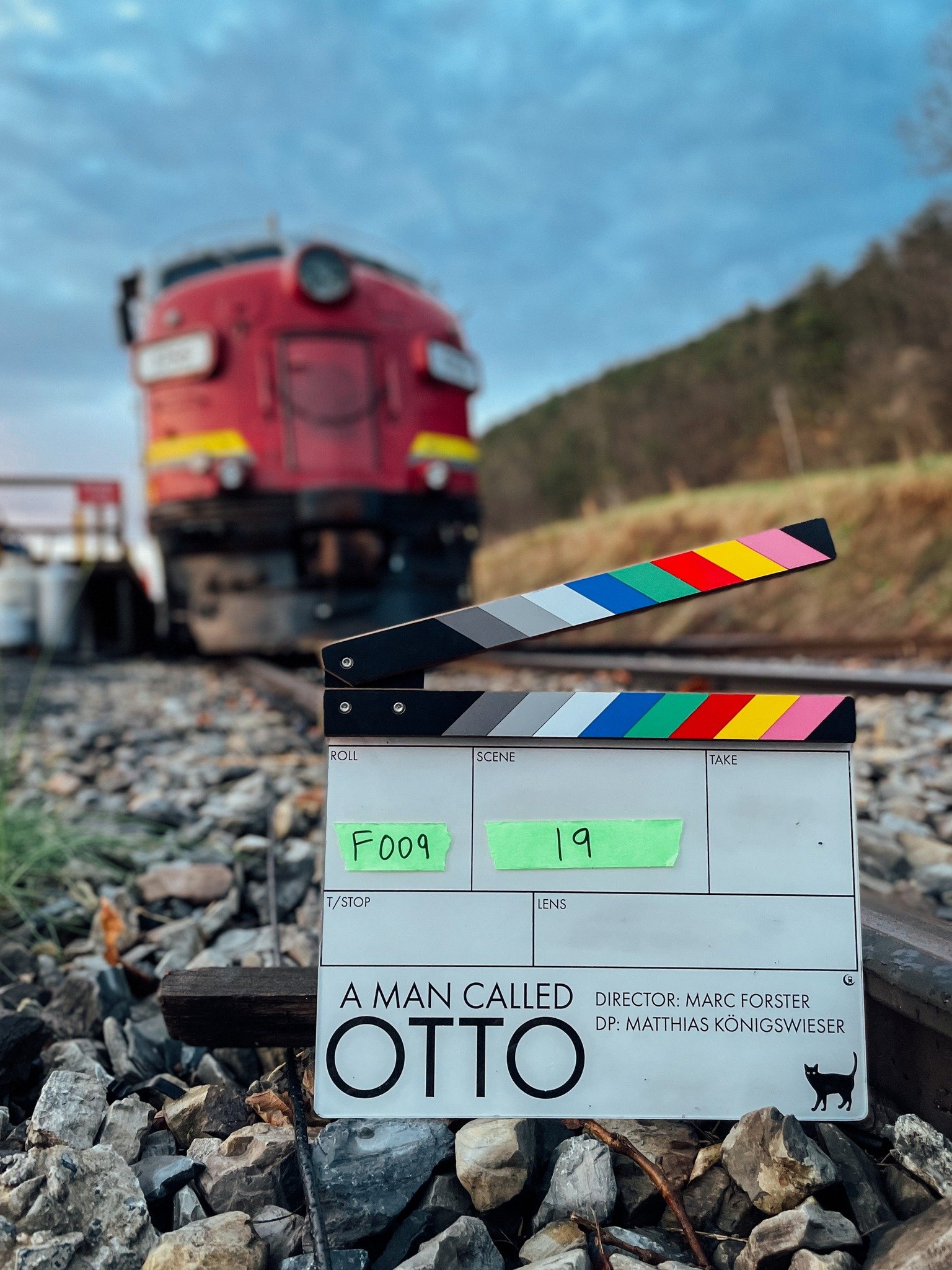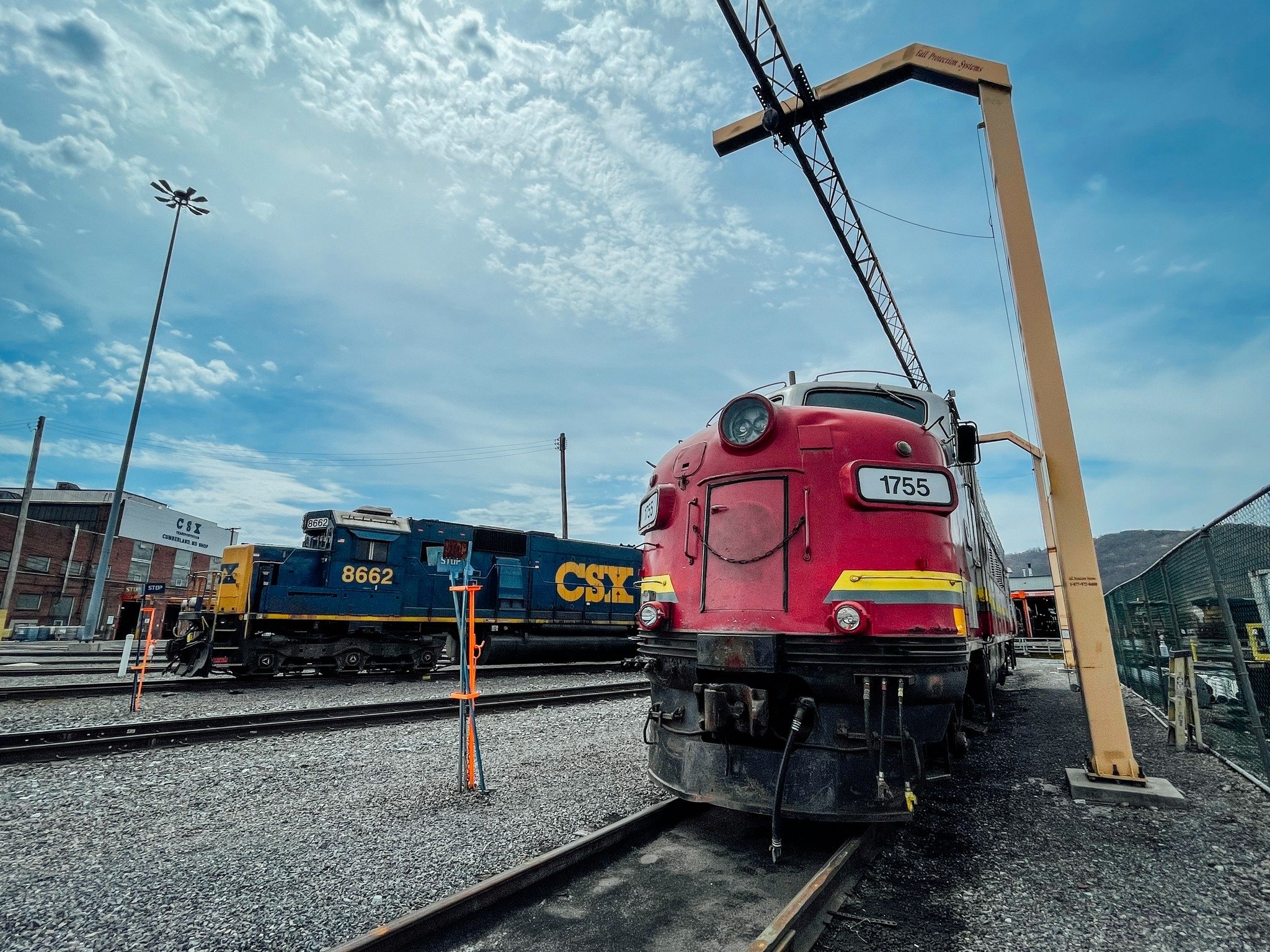Historic railroads cameo in Tom Hanks film
A blend of historic railroad attractions helps recreate a 1970s commuter train for A Man Called Otto, the latest feature film starring Tom Hanks.
Emboldened by new state tax credits and a strong filmmaking community, Pennsylvania has seen a steady increase in film and television productions – and with them have come a special set of creative challenges. In late 2021, producers for A Man Called Otto knew they needed to solve one problem very early on: they needed trains.
While trains had played a different role in the original Swedish book and subsequent film Man Called Ove (2015), the new American adaptation featured only vestiges of the railroad element, but in a more romantic backdrop.
“The train work in this picture helps form the narrative heart of the movie, but we knew it would be very challenging to serve our specific creative ambitions while remaining both on budget and on schedule,” explains John Adkins, locations manager for the movie. “We told our local contacts in Pittsburgh that we needed a ‘train guru’ and they knew just the right person to make it work.”
Linked by the technical expertise of railroad consulting firm FMW Solutions and its movie train coordinator Kelly Lynch, the equipment and locations of the Potomac Eagle Scenic Railway, Cuyahoga Valley Scenic Railroad, and Washington DC Chapter of the National Railway Historical Society were sourced to appear in two flashback sequences.
With his lifelong connection to the railroad world, Lynch’s film pursuits began at NBC/Universal in 2005 and have since led to a number of awards for his screenwriting, creative, and commercial work. After bringing his expertise to FMW Solutions in 2021, Lynch’s help on an Amazon television series in Pittsburgh led to the recommendation for Otto.
“Sourcing equipment that would fit the look and feel for Otto was the easiest part, but threading the needle of getting the locomotive and passenger cars where they needed to be is why we were hired,” explained Lynch. “While the original desire was to film platform exteriors at Pittsburgh Union Station and moving train work on a nearby regional railroad, the short lead time, proximity to a busy freight and passenger mainline, and other logistical limitations meant we had to explore a number of alternatives.”
Loosely inspired by the Mon Valley Commuter Rail system that served the Pittsburgh region in the 1970s, an FP-9A locomotive from Potomac Eagle and former MARC and Pennsylvania Railroad commuter cars fit the bill.
After leading a series of technical and director scouts, filming took place over three days, at three different locations. The first was a day of exterior aerial work in Romney, West Virginia featuring the Potomac Eagle’s characteristic diesel locomotive and stainless steel passenger cars, which looked visually similar to the MARC cars. A few weeks later, filming resumed in May for interior scenes aboard the Cuyahoga Valley Scenic Railroad’s passenger train set in the Cuyahoga National Park.
“During the busy tourist season, hosting a film production can be a big task, but we’re grateful to the National Park Service for helping us welcome the production to the Valley,” said Joe Mazur, President of the Cuyahoga Valley Scenic Railroad. “Our crews really enjoyed it and it created a lot of buzz for us in the community.”
For the moving train work, the production modified a former Budd Rail Diesel Car, chosen for its spartan interior to reflect the state of passenger rail in the 1970s, and operated between Jaite and Rockside, Ohio.
“Every movie train is special, though generally, productions want either steam locomotives or modern freight or passenger trains,” added Lynch. “This is an era of passenger rail rarely seen on film. In some cases, car interiors were rejected because they were restored and looked too nice.”
In the interim, the Potomac Eagle locomotive ventured to Toledo where it would meet two former MARC commuter cars shipped in from the Cuyahoga Valley where they’d been leased for seasonal events. Lynch escorted both shipments as they moved en route over CSX, and the equipment arrived a week before production began.
“For the Potomac Eagle, shipping one their primary locomotives out ahead of their regular season was not an easy decision, but we were fortunate to have CSX railroad crews in Cumberland, Maryland, Walbridge, Ohio, and at CSX Community Affairs to make sure this equipment would make it to and from its engagement in Toledo without issue,” detailed Lynch.
Amid pre-production, Toledo’s art-deco Central Union Terminal had been an early favorite of director Marc Forster and production designer Barbara Ling.
“The station and period trains were a perfect match,” said Louise Rosner, executive producer.
“Once we confirmed the Toledo Port Authority owned the platforms and actual trackage, we knew we had three tracks and 4,000 feet of the railroad to operate on without encumbering the nearby mainline or disrupting Amtrak’s passenger operations,” Lynch stated.
“The local Norfolk Southern crews were critical to ensuring the production could select Toledo as a location, as they worked with us to ship, switch, and position the equipment so that our teams could take over,” said Lynch. “Their level of responsive customer service was not only impressive but a great relief.”
In coordination with the Port Authority, Norfolk Southern, and Amtrak, Lynch isolated the platforms, imported station props from a nearby railroad museum, and conducted safety briefings with a cast of over 160 performers. The third day of railroad work on the production would also be the final day of principal photography.
“Even in a tightly controlled operating environment, this many people on a platform with a moving train represents safety concerns. During our production briefing, we taught everyone the signal to ‘stop,’ for instance if they saw someone trip, fall, or otherwise saw something that was unsafe. Everyone knew what our whistle signals meant in terms of train movement and direction and we had flagmen to protect performers,” explained Lynch.
Overall, the production brought a six-figure boost to the local economies in Brecksville and Toledo as a cast and crew of 300 descended on Ohio, and equipment returned without issue.
“The train work went off perfectly,” added Rosner.
Ultimately, the movie train work makes up approximately five minutes of total screen time, but the additional layer of authenticity and practical sets are a departure from a trend towards artificial sets or digital imagery. Of course, it also means the railroad entities involved were compensated too.
“Tourist railroads and museums are great assets that can usually be very accommodating within reason,” Lynch furthered. “We filmed a drone scout for the aerial film crew on a Friday so the director could pick out locations, and less than a day later we were on board the passenger train to travel to the spots that had been selected, and then filmed until we ran out of daylight. Even for cost-conscious shows, there’s still a lot that’s very achievable and can be accomplished safely, quickly, and creatively.”
“With trains, you have all the complications of props, locations, safety, stunts, vintage vehicles, and more rolled up into one. FMW not only helped all of us wrap our heads around what was achievable, but they went out and made it possible,” explained Adkins.
FMW Solutions was also assisted by Mid America Railcar, Carload Express, Mad River & NKP Railroad Museum, Horizon Rail, Fort Wayne Railroad Historical Society, McRail Insurance, Brian Smith, and Chris Homco.
“It really means a lot to marry two remarkably complex industries,” said Lynch. “But it’s also immensely satisfying to call up our network of partners and connect the dots together for a project like this. Railroad magic and movie magic really aren’t that much different from one another.”
A Man Called Otto is now available on streaming.














